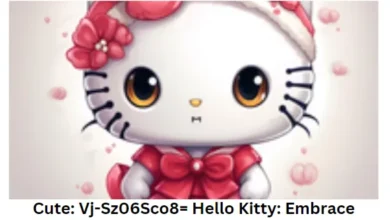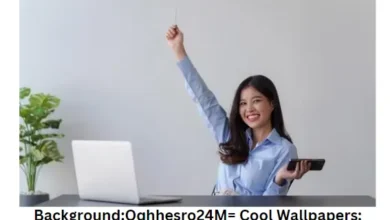Drawing:Znnauq4Mcdm= Dog: Explore Your Creativity!

Drawing “Znnauq4Mcdm= Dog” likely refers to a specific or stylized representation of a dog. Decoding or understanding this reference requires context. Drawing has always been a universal expression, transcending language barriers and allowing creativity to flourish. Whether it’s a straightforward doodle or a detailed sketch, Drawing can capture the essence of life, emotions, and imagination in ways words cannot fully encompass.
With their varied breeds, expressions, and body language, dogs make for an endlessly fascinating subject for artists of all skill levels. From the rough texture of their fur to the sparkle in their eyes, capturing the likeness of a dog on paper or digitally is a rewarding challenge that combines observation with artistic skill.
Artists often strive to depict the physical attributes and imbue their drawings with the personality and spirit of the canine subject. While requiring patience and practice, this endeavour enriches our appreciation for art and our four-legged friends.
Contents
- 1 Exploring Creativity With Canine Companions
- 2 Getting Started With Dog Drawing
- 3 Understanding Canine Anatomy
- 4 Mastering Dog Portraits
- 5 The Playful Side Of Dog Art
- 6 Stories On Paper: Capturing Canine Personalities
- 7 Challenges And Solutions In Dog Drawing
- 8 Sharing Your Dog Art With The World
- 9 Conclusion
Exploring Creativity With Canine Companions
There’s a special bond between artists and their furry friends. Dogs bring joy, comfort, and endless inspiration. They sit by our side as we create, offering silent support that fuels our creativity. In this section, we explore how our four-legged companions keep us company and inspire our artistic work.
The Bond Between Artists And Their
Dogs and artists share a unique connection. This partnership often leads to remarkable creativity. Artists find comfort in the loyal presence of their dogs, a presence that often ignites creative sparks.
- Canine companions as silent supporters
- Emotional connection enhancing artistry
- Non-judgmental presence fostering creativity
Inspiration From Four-legged Muses
Dogs do more than offer companionship; they inspire. Observing a dog’s carefree nature or expressive eyes can spark new ideas. Artists often capture the essence of joy, movement, or emotion by reflecting on their dog’s behaviour and personality.
| Dog’s Trait | Inspiration Type |
| Playfulness | Artistic whimsy |
| Loyalty | Deep emotional themes |
| Curiosity | Innovative concepts |
Getting Started With Dog Drawing
Drawing dogs is fun and rewarding. Start creating furry friends on paper today! With the right approach, anyone can bring these loyal companions to life. Let’s dive into the essentials of dog drawing for beginners.
Choosing The Right Materials
The first step is Selecting quality drawing tools. Begin with a simple pencil set and sketchpad. A good eraser is also crucial. Look for pencils ranging from 2H to 6B. These allow for a variety of lines and shades. Choose a medium weight that can handle erasing and shading without tearing for paper.
- Pencils: 2H for light lines, 6B for dark shadows
- Paper: Medium weight for durability
- Eraser: Kneadable or white for clean corrections
Art Supplies for Dog Drawing
For a more professional touch, you might want to explore various art supplies:
- Coloured Pencils: For vibrant and detailed colouring.
- Charcoal: Ideal for creating deep shadows and textures.
- Markers: For bold and bright illustrations.
- Digital Tools: Tablets and styluses can open up a world of digital Drawing.
Essential Techniques For Beginners
Mastering simple techniques will make a big difference. Start with basic shapes to form the dog’s body. Circles and ovals are suitable for the head and torso. Use straight lines for the legs and tail. Practice shading to give your dog depth and realism. Light strokes create texture for fur. Remember, practice is vital!
- Begin with simple shapes for body parts
- Use straight lines for structure
- Apply light strokes for a fur texture
- Practice shading for depth
Step-by-Step Dog Drawing Tutorial
- Outline the Basic Shapes: Start with circles for the head and body. Add ovals for the legs and tail.
- Sketch the Structure: Connect the shapes with lines to form the dog’s structure.
- Add Details: Draw the eyes, nose, ears, and other facial features.
- Refine the Drawing: Smooth out the lines and add finer details.
- Shade and Texture: Use shading to create depth and texture for the fur.
Understanding Canine Anatomy
Drawing dogs requires knowledge of their body. Canine anatomy is fascinating. Each part of a dog’s body works together. This helps them move and express feelings. Artists must study dogs to draw them well.
Critical Points In Canine Structure
Bones and muscles give dogs their shape. Understanding these is crucial. Here are the essential parts:
- Skull: It houses the brain and shapes the head.
- Spine: A flexible backbone that supports the body.
- Ribs: Protect vital organs inside the chest.
- Limbs: Front legs and hind legs for movement.
Each part has a particular job. Together, they let dogs run, jump, and play.
Advanced Dog Drawing Techniques
- Dynamic Poses: Practice drawing dogs in various poses to capture movement and action.
- Lighting Effects: Experiment with light and shadows to enhance the realism.
- Mixed Media: Combine different mediums like watercolour and ink for unique effects.
Capturing Movement And Posture
Dogs show feelings through body language. Artists capture this to make drawings lively. Here are tips:
- Observe dogs in real life or videos. Notice how they move.
- Sketch quickly to get the pose. Detail can come later.
- Understand the mood. A happy dog wags its tail high. A scared dog tucks its tail.
Practice makes perfect. Keep drawing dogs in different poses.
Dog Drawing for Kids
Engage children with simple and fun dog drawing activities. Use easy steps and bright colours to keep them interested. Encourage creativity by letting them draw their favourite dog breeds.
Mastering Dog Portraits
Mastering Dog Portraits unlocks the joy of capturing a pet’s personality. Art lovers and dog enthusiasts find immense satisfaction in creating detailed, lifelike drawings of our furry friends. A portrait that genuinely resembles a dog requires a keen eye for detail and an understanding of canine features. Let’s dive into the techniques that can help bring these delightful creatures to life on paper.
Focusing On Facial Expressions
, Dogs communicate much through their faces. Their eyes, ears, and mouths can tell a whole story without a single bark. To master dog portraits, artists must observe and translate these expressions.
- Study a dog’s eyes; they often reflect emotion.
- Capture the way ears tilt or fold for alertness or relaxation.
- Sketch the mouth and notice changes with different moods.
Practice by drawing from photos or watching a dog in different scenarios. This will help you understand and recreate the nuances of their expressions.
Tips for Realistic Fur Textures
The key to realistic fur is observation and technique. Start by understanding the fur’s direction, length, and texture.
- Observe the fur flow and replicate it in your strokes.
- Layer your shading to create depth and volume.
- Use varied pencil pressure for different fur types.
Employ fine lines for short fur and bolder, sweeping strokes for longer coats. Always work in the direction the fur naturally grows.
The Playful Side Of Dog Art
Dog art doesn’t have to be severe or realistic all the time. The playful side of dog art can bring joy and laughter to any dog lover’s heart. It captures the funny and silly moments our furry friends offer us daily. Let’s learn how to make our dog drawings full of life and mischief!
Incorporating Playfulness In Your Drawings
To make your dog drawings playful, think about what makes dogs happy. Dogs love to play fetch, chase their tails, and jump around. Picture these actions in your mind. Now, let’s put them on paper with a few tips:
- Exaggerate their features: Make their ears floppier and their tails wiggier.
- Use action lines: Show them running or leaping with lines that follow their movement.
- Add a big smile: Show off their happy faces with a big, toothy grin.
Using Color To Convey Emotion
Colors are powerful. They tell us how to feel about a drawing. To make your dog art pop with emotion, follow these colour tips:
| Colour | Emotion |
| Yellow | Happiness |
| Blue | Calmness |
| Red | Excitement |
Choose bright and bold colours for excitement. Use soft and cool colours for calm moments. Mix colours to show all the different feelings your dog has.
Digital Dog Art
Digital drawing tools can offer new ways to create dog art. Explore software like Adobe Photoshop, Procreate, or even free apps. Digital art allows for easy corrections and a wide range of effects.
Stories On Paper: Capturing Canine Personalities
Drawing dogs is more than capturing their shape on paper. It’s about bringing their unique personalities to life. Each dog has its own story; through art, we can share these stories. Let’s explore how artists capture the essence of canine companions.
Bringing Out Individual Character
Every dog is special. Artists focus on unique traits to show this. For example, how a dog tilts its head or bright eyes tells us who the dog is.
- Bright eyes show a dog’s spirit.
- A tilted head can display curiosity.
- Each wagging tail has its rhythm.
Artists use these traits to make each Drawing one-of-a-kind.
Illustrating Dog Behavior And Quirks
Dogs do the funniest things. Artists love capturing these moments, which show the dog’s personality and quirks.
| Behaviour | What it shows |
| Chasing their tail | Playfulness |
| Napping in the sun | Contentment |
| Bringing you a toy | Loyalty and love |
These drawings become treasured memories for dog owners. They capture the joy and love dogs bring into our lives.
Sketching vs. Painting Dogs
Decide whether to sketch or paint your dog art. Sketching is great for quick, detailed drawings, while painting offers a richer and more colourful approach. Each method has its charm and techniques.
Challenges And Solutions In Dog Drawing
Drawing a dog can be fun yet challenging. Artists often encounter obstacles when trying to capture the essence of man’s best friend on paper. Whether you’re a beginner or an experienced artist, understanding these challenges and how to address them is critical to creating a realistic portrayal of dogs.
Common Obstacles Artists Face
When drawing dogs, artists commonly face difficulties with:
- Anatomy: Understanding a dog’s structure is crucial.
- Fur texture: Dogs have various fur types that can be hard to replicate.
- Expression: Capturing a dog’s emotion requires skill.
- Movement: Dogs are dynamic, and it’s challenging to depict motion.
Artists often need help with the proportions and positioning of a dog’s body parts. The alignment of the legs, the shape of the tail, and the outline of the ears must be precise. This requires a good eye for detail and a solid understanding of canine anatomy.
Overcoming Difficulties With Practice And Patience
Improving dog drawing skills happens over time. Here are some solutions to help artists overcome challenges:
- Study anatomy: Use reference photos to familiarize yourself with the structure.
- Practice fur textures: Experiment with different tools and strokes.
- Observe expressions: Sketch from real life to capture emotions.
- Draw movement: Start with basic shapes to simplify the process.
Patience is vital when mastering the art of dog drawing. Regular practice helps artists develop their skills and become more confident. With time, the challenges that once seemed daunting become manageable, leading to beautiful and lifelike dog illustrations.
Dog Drawing Competitions
Participate in dog drawing competitions to showcase your skills. These events can provide exposure and opportunities to connect with other artists. Look for local and online competitions to enter.
Sharing Your Dog Art With The World
Do you love drawing dogs and want to share your art? Great news! You can show your dog drawings to the world easily. Your art can reach people everywhere. Let’s look at how to share your fantastic dog art.
Platforms For Showcasing Your Work
Many online platforms let you share your dog drawings. Below are popular ones:
- Instagram: Perfect for visual art. Use hashtags to get noticed.
- DeviantArt: A community for artists. Great for feedback.
- Etsy: Sell your original dog art to buyers worldwide.
- Pinterest: Pin your artwork for others to discover.
- Facebook: Join art groups and share with dog lovers.
Choose one or more platforms to start. Remember to post regularly!
Engaging With The Artist And Pet Lover Community
Engagement is critical to connecting with others. Here’s how:
- Comment on other artists’ work. Be kind and supportive.
- Join art forums. Share tips and make friends.
- Attend pet events. Show your work and network.
- Start a blog. Write about your drawing process.
Engage often for the best experience. Enjoy the community spirit!
Famous Dog Artists
Learn from famous artists known for their dog drawings. Study their techniques and styles for inspiration. Artists like George Stubbs and Edwin Landseer are celebrated for their detailed and emotive dog art.
Pet Portrait Commissions
Consider offering pet portrait commissions. Create custom dog drawings for clients who want to immortalize their pets. This can be a rewarding and profitable endeavour.
Custom Dog Art Gifts
Dog art makes for beautiful gifts. Create personalized dog drawings for birthdays, holidays, or memorials. These custom pieces can be cherished keepsakes.
Conclusion
Embarking on the journey of Drawing can unlock a world of creativity, especially when the subject is as heartwarming as our canine companions. This blog post aimed to guide and inspire your pencil strokes to capture the essence of your furry friend. Remember, practice is critical, and your skills will grow with each sketch. So, grab your tools and begin your artistic adventure with “Drawing:Znnauq4Mcdm= Dog” leads you to masterful creations.
To read more articles, please check: Newslinkkshubs.com



